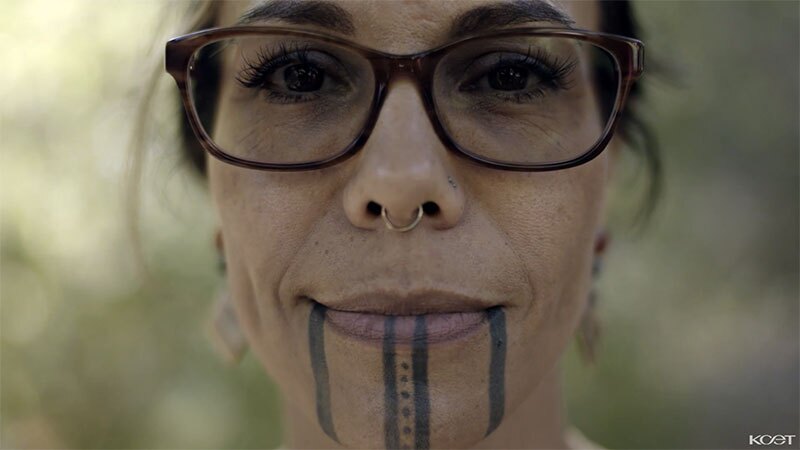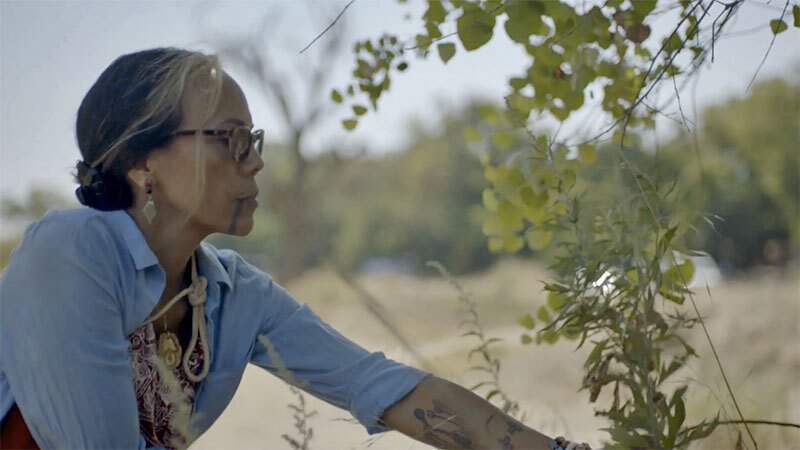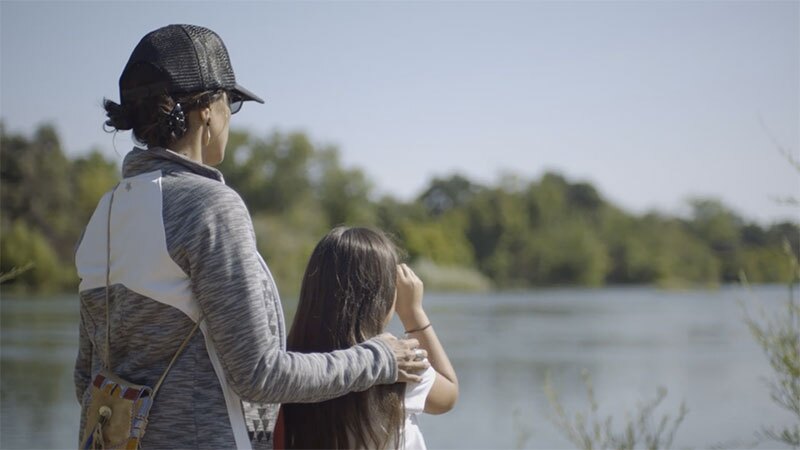Oneness With That Place: A Chat with Native Herbalist Sage LaPena


Watch our documentary Tending The Wild on KCET TV, February 7 at 9:00 p.m.
Sage LaPena is a Nomtipom Wintu ethnobotanist and certified medical herbalist. She has worked for years to preserve and pass along Native uses of plant medicines — from both native and introduced plants — and other aspects of Traditional Ecological Knowledge connected to plants. We spoke with her in Folsom, California.
What is Traditional Ecological Knowledge?
Traditional Ecological Knowledge (TEK) is a body of science that encompasses all sciences, and yet, is only recently found to be true science. If you are a people living in the same place, the same region, for a thousand years, you've watched the turn of the seasons, the migrations of animals, birds, insects, the changing of celestial bodies, fire regimes and how they move through plant life, all of those things together. How we hunt and fish, how we gather our plants, how we are able to subsist and look at the science of the stars. All of that encompasses TEK.
How long have Native People been tending the land?
When the Spanish were doing explorations in the 1500s, 1600s, they wrote in their journals that this was the garden of Eden. They found the garden of Eden because the people utilized the land. We created the abundance by use of the plants that were seen when explorers came to the new lands. Utilized by humans, humans being a part of the web, the chain, and having a responsibility for that tillage, for the burning off of the land. Some people consider the three Rs "reading, writing, arithmetic," but they are "responsibility, respect, and reciprocation." We receive so much from the earth, and yet we don't give in return.
How did you learn about plant medicines?
Herbalism is so much more than just, "Here's an herb. Go ahead and take it." The way I was trained to be an herbalist was starting actually sitting in the woods, going with Mabel McKay, who was my mentor. She had me sit for periods of time out there and just be observant, be conscious. I learned a completely different understanding of herbalism. As a whole in nature as opposed to just how herbs affect individual body systems.
Mabel was well known as a basket weaver and also as a doctor. She was Pomo and Wintun. She would take me out to different places in Northern California where she, herself, gathered. Sometimes for basketry, sometimes for other medicines and just, kind of talked to me about what I was seeing. Also, letting me sit in the forest alone to observe and partake in what it was that I was witnessing. It really wasn't something that was given to me as, "Now we're going to learn about this thing." It happened in more of an organic way.
It wasn't until I was in my twenties and I worked at a nursery in Sonoma County and met Essy Parish's daughter and worked with her and other people who I spoke with, led me to the knowledge that I had been trained as an herbalist, to be a medicine doctor or a medicine maker for my people. I studied what is considered to be traditional Native American herbalism.
How did you become a certified medical herbalist?
As a practitioner of traditional Native American medicine, there is no certification body. But I went back to school to be become a certified medical herbalist [at the American Herbalist Guild]. Working with the knowledge that I already had, I was doing workshops and teaching from my knowledge base.
I went back and studied physiology and standardization of extracts. Then, from there I had to do clinical service. I worked at Sonoma County Indian Health Service in Santa Rosa, with a doctor in an herbal pharmacy. After I got so many hours, and also, working in the clinic at the California School of Herbal studies, then I became certified. I knew how to do prescription formulae.
How do you acquire the plant based medicines you use as an herbalist?
I need to know on a regular basis where I'm getting medicines from, at what time of year I'm harvesting, when are they doing their spraying, am I on someone else's land. Sometimes I can get permits from the state of California for a gatherer's permit. Then you can also get Memoranda of Understanding with private land owners if you're gathering specific medicines. That's a huge amount of things to think about to be able to participate in my own culture and participate as a traditional person that is partaking in the medicine of the land. Even just as an herbalist, my activism is every day when I try to go out there and harvest.

When you go to sacred places, whether they're mapped as such or not, it still remains true that that's what they are. By approaching and being a part of those places, you do receive that from them. I've gone to places where I was looking at the possibility of gathering medicine, but instead I left without gathering any plant material. Instead what is gathered at some places is just knowledge in the sense of being one. You go to re-gather energy. The human body is a huge electro-magnetic field. We have all those elements. Electricity, which is in your fiber is earth, water, air, and all that runs through our being. When we're separated from the land, we need recharging. That's why so many of our sacred places are places where water is moving. The movement of water is negative ions. Waterfalls, the shoreline, are all places for recharging, and we are drawn to these places even as the general public that doesn't necessarily know something is a sacred place.
Can you give us examples of how you use specific plants?
Artemisia is one of the plants we use a lot for women's medicine. It's made into a tea and it's drunk to help regulate your moon cycle or your menstrual cycle. The main constituents of the oils that it has in it are very bitter in nature. That bitter action helps balance all your systems in a row. When you intake bitters, your digestive system is working better, because your gall bladder and your pancreas talk to each other. They work in unison. The tonic has to do with tonification, so you're toning those walls, which then is also going out through that cell wall and helping that tone through both the blood, digestion, and then that's getting into your blood system, and then actually going out through your intestinal wall, is helping to tonify your overall system. When you have that tonification of your system, you don't have that much cramping. When you have tonification, then you have all the smooth muscle working together.
There are [also] herbs that can help you to balance your systems. One of those is Vitex. There's also local leaves such as the raspberry leaf, which is tonifying for the system. Some are more tonifying or nutritive. We work with [plants and herbs that] would re-balance your own particular system. Everyone is different, everyone has different needs. We eat different foods, have different lifestyles, but if you have reproductive organs whether you're male or female, you can use these herbs for tonification.
You have worked as an herbalist caring for cancer patients.
When I did have cancer patients, I worked with three different oncologists. Of those, two of them did say that they prescribe chemotherapy and radiation treatment for their patients as a standard. However, that they would probably want to go the route of seeking herbs. That they, themselves, knew that deep down inside, it wasn't the way to go because it had such a far reaching effect on the body system, as a whole.
The reason why I think that more people choose radiation and chemotherapy is because they wait so long to seek help with their cancer, to begin with. When you are in denial and not allowing your own intuitive body to let you know that something is going wrong at all. Then the system has so much break down that it's really hard for just herbs, and nutrition, and whatever else you seek that isn't that type of chemical warfare, to be able to replace radiation and chemotherapy. That's kind of a last ditch effort when they really seek help about it. Someone like an oncologist, who sees it on a general basis, knows that if people sought the help sooner, that they would more likely be able to benefit from using herbs as a therapy for cancer.
What do you want people to know about Native Peoples?
When I teach classes, I really want people to understand we as native Californians, as traditional people, are utilizing the same medicines they are, and we're trying to harvest these things traditionally on our own or public lands that are in our tribal territories. When people learn about herbs and how wonderful they are and then they go out and gather all of them, we don't have access to our medicine.
It's really important for people to understand we're not an extinct people, and these places where our villages [were built] right under malls and city parks. Things are still being found from the original peoples that lived here for thousands of years. Their footprint is still here. I think it's important for our youth, and also elders that don't necessarily visit these places to come back to these places and get a sense of belonging of where their ancestors were from, and where the DNA that runs through their bodies originated, because you are part of your environment, and when you're feeling lack of grounding, and you're living in high rises, and you're not living close to the earth, it's important to return to those places to be able to feel oneness with that place.

How do you hope Americans in the future will relate with plants?
We've been trained long-term generationally, particularly in this country, to react to certain way to our environment or not react at all. We all could do better. To just have more consciousness about what we're doing on a regular basis. So much of the medicine that we don't utilize including the medicine for ourselves and our own balance is just out there.
My hope for the future is that we have more civil disobedience in terms of death to Monsanto. It's a genocide of the planet overall, when it comes down to it. It's a few people and corporations that are led by unhealthy, fearful, ignorant people that have a very short-sighted view of what's important, and that more people save seeds, understand their environment, get out in it, so they see what it's about before it's gone, participate, and learn what it is that they're missing. When you understand something better, you have more of a vested interest in its protection.

Co-produced by KCETLink and the Autry Museum of the American West, the Tending the Wild series is presented in association with the Autry's groundbreaking California Continued exhibition.





